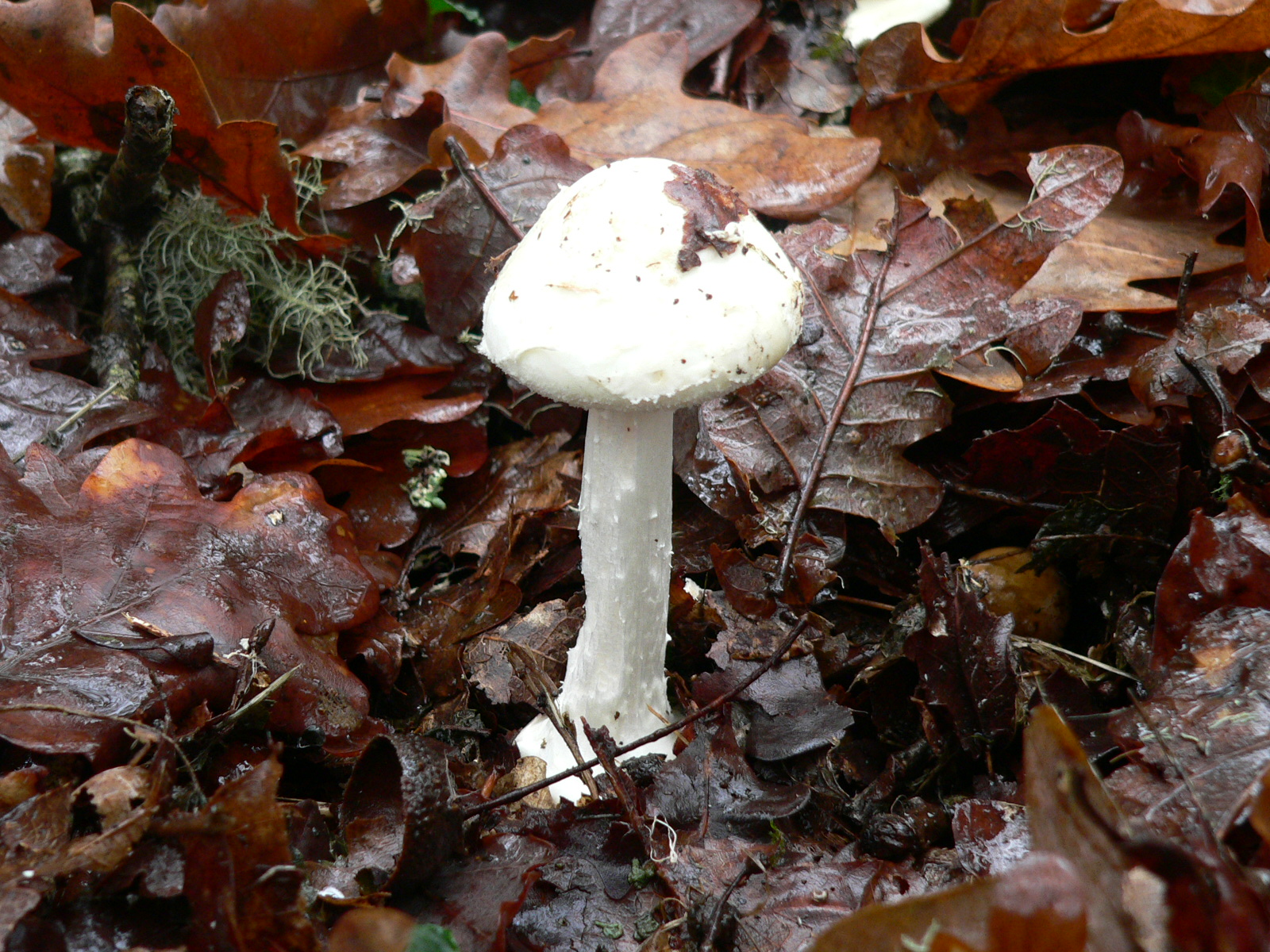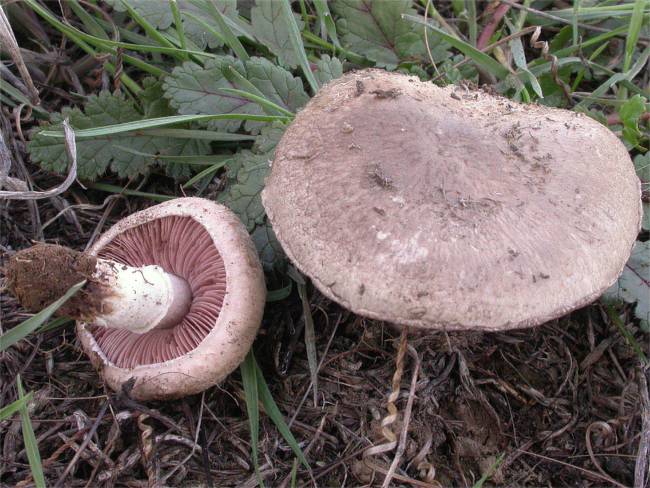|
Agaricus Bresadolanus
''Agaricus bresadolanus'' is a species of fungus in the genus ''Agaricus''. It was described by Hungarian mycologist Gábor Bohus in 1969. A rare species, it has been recorded in Asia and southern Europe, where it fruits singly or in groups along paths and in grassy area of deciduous woodland. It spores are ellipsoid and lack a germ pore A germ pore is a small pore in the outer wall of a fungal spore through which the germ tube exits upon germination. It can be apical or eccentric in its location, and, on light microscopy, may be visualized as a lighter coloured area on the cell ..., with dimensions of 5.5–7.5 by 4.0–5.0 µm. See also * List of ''Agaricus'' species References External links * {{Taxonbar, from=Q10403026 bresadolanus Fungi described in 1969 Fungi of Europe Edible fungi ... [...More Info...] [...Related Items...] OR: [Wikipedia] [Google] [Baidu] |
Gábor Bohus
Gábor Bohus (1914–2005) was a Hungarians, Hungarian Mycology, mycologist born on 4 July 1914 in Budapest. Early life Gábor Bohus was born to Paula Kitschalesz and Róbert Bohus on 4 July 1914. Paula maintained a garden at home and Róbert was a student of László Szemere's mushroom study course so Gábor was exposed to the plants and mushrooms that he would spend his life studying from a young age. He graduated from the Lutheran high school in Fasor and went on to study at the Faculty of Natural Sciences of the Pázmány Péter Catholic University, Pázmány Péter University from 1932 to 1937 where he studied botany, chemistry and mineralogy. His 1937 doctoral dissertation explored artificial breeding of ''Clasterosporium carpophilum'' with mushrooms. Gábor then joined the Museum of Natural Sciences in 1937 and became an unpaid intern at the botanical garden before being granted a scholarship. Between 1938 and 1945 he was called up for military service several times and s ... [...More Info...] [...Related Items...] OR: [Wikipedia] [Google] [Baidu] |
Fungus
A fungus ( : fungi or funguses) is any member of the group of eukaryotic organisms that includes microorganisms such as yeasts and molds, as well as the more familiar mushrooms. These organisms are classified as a kingdom, separately from the other eukaryotic kingdoms, which by one traditional classification include Plantae, Animalia, Protozoa, and Chromista. A characteristic that places fungi in a different kingdom from plants, bacteria, and some protists is chitin in their cell walls. Fungi, like animals, are heterotrophs; they acquire their food by absorbing dissolved molecules, typically by secreting digestive enzymes into their environment. Fungi do not photosynthesize. Growth is their means of mobility, except for spores (a few of which are flagellated), which may travel through the air or water. Fungi are the principal decomposers in ecological systems. These and other differences place fungi in a single group of related organisms, named the ''Eumycota'' (''true f ... [...More Info...] [...Related Items...] OR: [Wikipedia] [Google] [Baidu] |
Agaricus
''Agaricus'' is a genus of mushrooms containing both edible and poisonous species, with over 400 members worldwide and possibly again as many disputed or newly-discovered species. The genus includes the common ("button") mushroom (''Agaricus bisporus'') and the field mushroom ('' A. campestris''), the dominant cultivated mushrooms of the West. Members of ''Agaricus'' are characterized by having a fleshy cap or pileus, from the underside of which grow a number of radiating plates or gills, on which are produced the naked spores. They are distinguished from other members of their family, Agaricaceae, by their chocolate-brown spores. Members of ''Agaricus'' also have a stem or stipe, which elevates it above the object on which the mushroom grows, or substrate, and a partial veil, which protects the developing gills and later forms a ring or annulus on the stalk. The genus contains the most widely consumed and best-known mushroom today, '' A. bisporus'', with '' A. arvensis'', ... [...More Info...] [...Related Items...] OR: [Wikipedia] [Google] [Baidu] |
Deciduous
In the fields of horticulture and Botany, the term ''deciduous'' () means "falling off at maturity" and "tending to fall off", in reference to trees and shrubs that seasonally shed leaves, usually in the autumn; to the shedding of petals, after flowering; and to the shedding of ripe fruit. The antonym of ''deciduous'' in the botanical sense is evergreen. Generally, the term "deciduous" means "the dropping of a part that is no longer needed or useful" and the "falling away after its purpose is finished". In plants, it is the result of natural processes. "Deciduous" has a similar meaning when referring to animal parts, such as deciduous antlers in deer, deciduous teeth (baby teeth) in some mammals (including humans); or decidua, the uterine lining that sheds off after birth. Botany In botany and horticulture, deciduous plants, including trees, shrubs and herbaceous perennials, are those that lose all of their leaves for part of the year. This process is called abscissio ... [...More Info...] [...Related Items...] OR: [Wikipedia] [Google] [Baidu] |
Basidiospore
A basidiospore is a reproductive spore produced by Basidiomycete fungi, a grouping that includes mushrooms, shelf fungi, rusts, and smuts. Basidiospores typically each contain one haploid nucleus that is the product of meiosis, and they are produced by specialized fungal cells called basidia. Typically, four basidiospores develop on appendages from each basidium, of which two are of one strain and the other two of its opposite strain. In gills under a cap of one common species, there exist millions of basidia. Some gilled mushrooms in the order Agaricales have the ability to release billions of spores. The puffball fungus ''Calvatia gigantea'' has been calculated to produce about five trillion basidiospores. Most basidiospores are forcibly discharged, and are thus considered ballistospores. These spores serve as the main air dispersal units for the fungi. The spores are released during periods of high humidity and generally have a night-time or pre-dawn peak concentration in the ... [...More Info...] [...Related Items...] OR: [Wikipedia] [Google] [Baidu] |
Ellipsoid
An ellipsoid is a surface that may be obtained from a sphere by deforming it by means of directional scalings, or more generally, of an affine transformation. An ellipsoid is a quadric surface; that is, a surface that may be defined as the zero set of a polynomial of degree two in three variables. Among quadric surfaces, an ellipsoid is characterized by either of the two following properties. Every planar cross section is either an ellipse, or is empty, or is reduced to a single point (this explains the name, meaning "ellipse-like"). It is bounded, which means that it may be enclosed in a sufficiently large sphere. An ellipsoid has three pairwise perpendicular axes of symmetry which intersect at a center of symmetry, called the center of the ellipsoid. The line segments that are delimited on the axes of symmetry by the ellipsoid are called the ''principal axes'', or simply axes of the ellipsoid. If the three axes have different lengths, the figure is a triaxial ellipsoid (r ... [...More Info...] [...Related Items...] OR: [Wikipedia] [Google] [Baidu] |
Germ Pore
A germ pore is a small pore in the outer wall of a fungal spore through which the germ tube exits upon germination. It can be apical or eccentric in its location, and, on light microscopy, may be visualized as a lighter coloured area on the cell wall. Apical germ pore is mushroom spore which has a pore at one end. Some spores have a hole in the cell wall where the first strand of germinating mycelium emerges. If the cell wall is divided from one end to the other, this is called a germ slit. Commonly the germ pore is at one end of the mushroom spore and is called an apical pore. Mushroom genera with apical germ pores include ''Agrocybe'', ''Panaeolus'', ''Psilocybe'', and ''Pholiota''. See also *mycelium *spore In biology, a spore is a unit of sexual or asexual reproduction that may be adapted for dispersal and for survival, often for extended periods of time, in unfavourable conditions. Spores form part of the life cycles of many plants, algae, f ... External linksIMA ... [...More Info...] [...Related Items...] OR: [Wikipedia] [Google] [Baidu] |
Micrometre
The micrometre ( international spelling as used by the International Bureau of Weights and Measures; SI symbol: μm) or micrometer (American spelling), also commonly known as a micron, is a unit of length in the International System of Units (SI) equalling (SI standard prefix "micro-" = ); that is, one millionth of a metre (or one thousandth of a millimetre, , or about ). The nearest smaller common SI unit is the nanometre, equivalent to one thousandth of a micrometre, one millionth of a millimetre or one billionth of a metre (). The micrometre is a common unit of measurement for wavelengths of infrared radiation as well as sizes of biological cells and bacteria, and for grading wool by the diameter of the fibres. The width of a single human hair ranges from approximately 20 to . The longest human chromosome, chromosome 1, is approximately in length. Examples Between 1 μm and 10 μm: * 1–10 μm – length of a typical bacterium * 3–8 μm – width of ... [...More Info...] [...Related Items...] OR: [Wikipedia] [Google] [Baidu] |
List Of Agaricus Species
''Agaricus'' is a genus of mushrooms containing both edible and poisonous species, with over 400 members worldwide and possibly again as many disputed or newly-discovered species. The genus includes the common ("button") mushroom (''Agaricus bisporus'') and the field mushroom ('' A. campestris''), the dominant cultivated mushrooms of the West. Members of ''Agaricus'' are characterized by having a fleshy cap or pileus, from the underside of which grow a number of radiating plates or gills, on which are produced the naked spores. They are distinguished from other members of their family, Agaricaceae, by their chocolate-brown spores. Members of ''Agaricus'' also have a stem or stipe, which elevates it above the object on which the mushroom grows, or substrate, and a partial veil, which protects the developing gills and later forms a ring or annulus on the stalk. The genus contains the most widely consumed and best-known mushroom today, '' A. bisporus'', with '' A. arvensis'', ... [...More Info...] [...Related Items...] OR: [Wikipedia] [Google] [Baidu] |
Fungi Described In 1969
A fungus ( : fungi or funguses) is any member of the group of eukaryotic organisms that includes microorganisms such as yeasts and molds, as well as the more familiar mushrooms. These organisms are classified as a kingdom, separately from the other eukaryotic kingdoms, which by one traditional classification include Plantae, Animalia, Protozoa, and Chromista. A characteristic that places fungi in a different kingdom from plants, bacteria, and some protists is chitin in their cell walls. Fungi, like animals, are heterotrophs; they acquire their food by absorbing dissolved molecules, typically by secreting digestive enzymes into their environment. Fungi do not photosynthesize. Growth is their means of mobility, except for spores (a few of which are flagellated), which may travel through the air or water. Fungi are the principal decomposers in ecological systems. These and other differences place fungi in a single group of related organisms, named the ''Eumycota'' (''true fungi' ... [...More Info...] [...Related Items...] OR: [Wikipedia] [Google] [Baidu] |






